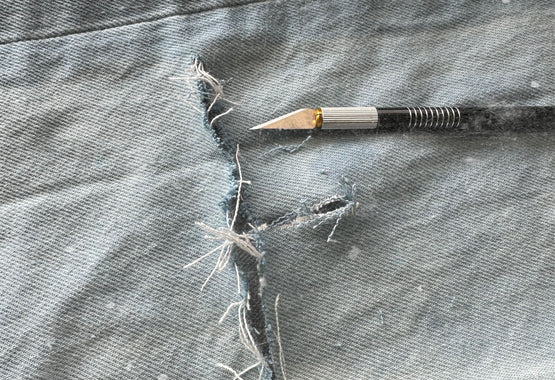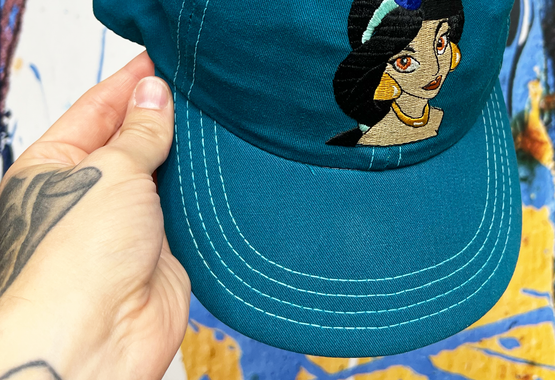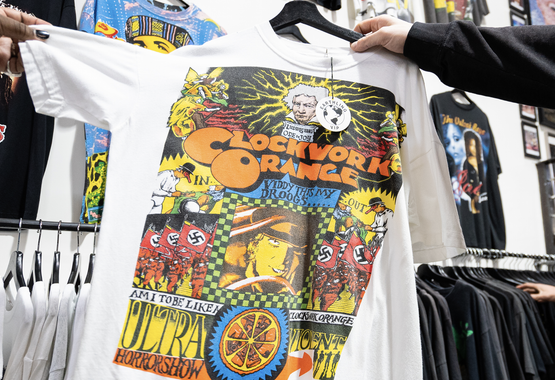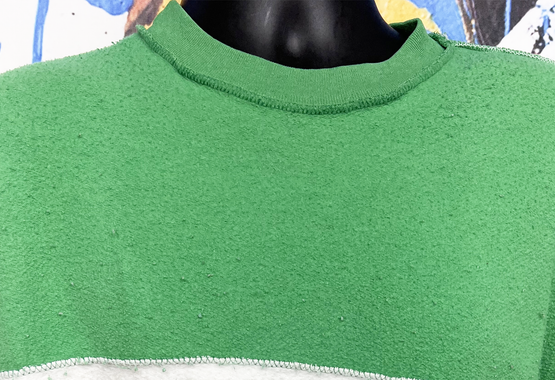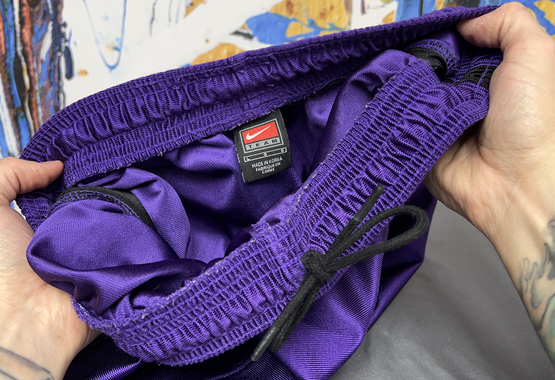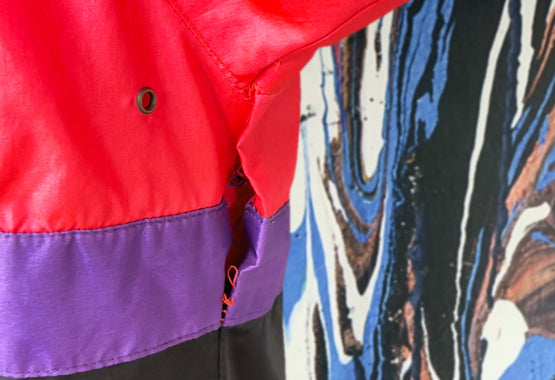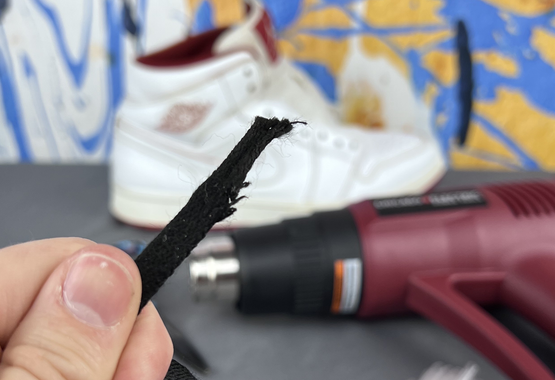Washing, Wearing and Storing a Vintage Tee So It Lasts Forever


Over the past several decades, mega-manufacturers have spent a good bit of time and effort figuring out ways to sell the greatest amount of clothing at the lowest cost for them to produce it. What many of them found probably won’t surprise anyone. For years, consumers asked for more accessibility to the brands they love, lower prices on the items they want and a low effort pipeline from the dirty clothes hamper back to the closet.
What this did, however, was create an environmental catastrophe — and a subsequent movement against it. Secondhand clothing is on a ride currently and continues to grow exponentially year over year. It’s quite simple, really, older clothes are made better and because of the sheer quantity of things out there already, it’s silly to buy new if you don’t have to.
Thriftin’ for the winnin’.
But textiles aren’t forever and require more detailed care than your modern run-of-the-exploitation-mill tees of today. And it’s like, if you’re into vintage fashion and spend time checking tags and learning about fabrics and understanding histories, wouldn’t you want to look after those investments and give them the best life they deserve?
When approaching t-shirt care, it doesn’t matter if your tees are cotton or rayon or polyester or any combination of the three (or more). The overall basics remain the same, and if you’re able to give them just a few extra minutes on the weekend you’ll quickly notice that you’ve increased the longevity of even some of the most fragile pieces by years, sometimes decades.
The first thing you’ve gotta ask yourself is if the tee even needs to be washed. If you’ve only gone out in it for a few hours or sat around the house all day, chances are the answer is no. Seriously. Hang it back up and move on with your life. Imagine how many trips to the laundry room you’ve just saved by that realization alone.
If you got stanky though, yeah it probably needs something extra. But even now the washing machine shouldn't the first line of defense. If there isn’t any visible dirt or stains you need to get out you can just shove a few tees into a plastic bag and put them in the freezer. Just like caring for jeans, putting t-shirts in the freezer kills bacteria (not all, but some) — the main culprit of stinky, mildewy clothing. Adding in a few trips to the freezer between washes not only extends the tees life, but cuts down on energy consumption in your home. Win/win.
Here’s where things get a little more involved. When it does come time to wash that tee, consider all the options. If you’re willing to hover over a sink for a few minutes, hand-washing is always best. We do have lives to live though so that may not always be a go-to. Delicate cycles these days do afford the same sensitivity as hand washing and are a decent alternative.
It goes like this: delicate cycle, shirt inside out to preserve the graphic, cold water (vintage tees can still bleed and shrink), light spin.
Now onto the soap game. Many of the so-called modern plant-based detergents need warm water to activate the ingredients in them. If the tee has been clearly washed before, this isn’t always the worst option. Cold water detergents are your best bet though. Surprisingly, Tide makes a line called Purclean and it performs the best in cold water conditions and has sustainable packaging. It’s also available at many of the big box stores so it’s convenient to find (unlike some of the other smaller brands).
If there are stubborn stains, try not to use bleach, ever. Bleach destroys the fibers and you often run the risk of dripping onto other clothes or lightening the tag or graphics. There are plenty of alternatives out there that aren’t as harsh on clothing: OxiClean, vinegar, lemon juice, hydrogen peroxide, even the sun.
Pro tip: YouTube has a wealth of information to divert your habits away from bleach.
Drying your garment should be a waiting game, too. The dryer is one of the worst possible environments for vintage clothes, really because of the heat, but also because it deteriorates the material, beats up the fabric and there's little control in how it's shaped. Best thing to do is air dry it. Clothes rack, hanger, floor, outside, whatever (just keep it out of the sun as much as possible).
As far as wearing your tees, any kind of personal motivation should be common sense already. If you’re willing to wear a $500 fit to the club, just understand that no one else really cares and you run the risk of a drink getting spilled on it by those who don’t. Sports games, same thing. Coal mines? Gonna go ahead and say no to that one. Understand the environment you’re going into and dress accordingly. Something as innocuous as standing out in the sun for just a few hours can fade a vintage garment that hasn’t been manufactured with the same standards as today’s clothing.
Lastly, storing your tees is just as important as washing them. For most, dedicated closet space is enough. Felted or grabby hangers to keep it from sliding around work best (metal hangers suck) or folded in a drawer is clutch. At various ThriftCon events over the years the team has met dozens of ultra-dedicated collectors that swear by plastic bins, too, with a few desiccant pouches thrown in for humidity. You just gotta gauge your level of commitment and do what the pros do if it’s next level.
And for the love of all that is holy, pull the hanger through the bottom of the shirt upward, do not stretch the collar over the large part of the hanger that's insane.
Let's face it, to the outsiders looking in it seems obnoxious to put so much effort into extending the life of a t-shirt. To them it's just a tee. To the growing movement, it's a small step toward sustainability and shifting the culture into a more reflective way of consumerism.
Besides, vintage shit's kinda expensive too. Gotta make it last lol
[cover photo ThriftCon LA '21 (Earthling VIP) by Joel Delgado/Panoptic Productions]



